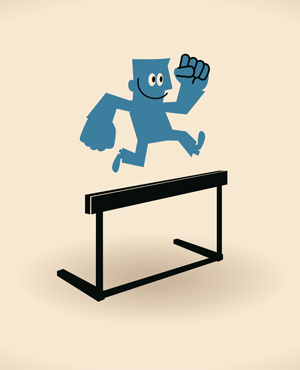 Have you healed your emotional wounds? Dreamed nightmares about your emotional baggage, luggage lying open, spilling over with your private stuff?
Have you healed your emotional wounds? Dreamed nightmares about your emotional baggage, luggage lying open, spilling over with your private stuff?
Recently, I griped about how peanut butter bunged me. But a week before, I begged for peanut butter to get more fats in my diet. Fickle, I now abhorred the nutty spread. Minor issue? Maybe. But not for my boyfriend, Cuddles. He thrives on smiles and sweet words.
So, Cuddles coaxed, Stop moaning and start mental training! But what’s mental training? It’s like physical training, he said. Yes, mental fitness training! Well, I shadow box and weightlift—an hour a day. “Mental train at least that long,” he said. Stirred, I took the plunge, scouring top-notch clips on self-esteem, self-talk, and CBT.
But I shed tears whenever I mental train. Will the pain wash away? Yes! Just like it does with physical training. When I first lifted weights, I felt zapped. But after five months fitness, my energy blossomed—from seedling to full flower, overnight. Spirited, I now bolt down streets with a spring long forgotten.
So, what blossoms with five-months mental training? The stitching of wounds.
We all have emotional wounds. Mine? Being bullied. But I viewed bullying as a hoax—a safe space, a sob story. That is, until I saw a book blurb on traits of the bullied. My life! Point after point pegged me. And, yes, wounds beg for stitches. But already, my mental training sewed scars, safety-pinned self-esteem, and snipped sore behaviors.
Glenn R. Schiraldi teaches freewriting and calm thinking in his book The Resilience Workbook: Essential Skills to Recover from Stress, Trauma, and Adversity:
- Don’t let wounds fester: “Research has clearly shown that old emotional wounds don’t necessarily heal with time. Left unresolved, they can exert an influence that affects present health and functioning” (Felitti as cited in Schiraldi, p. 81).
- How do you heal your emotional wounds? “Replace thoughts that promote distressing emotions with calmer, more upbeat thoughts” (p. 57).
- To heal, focus on the bright side: “Flaw fixation [is] zooming in on what is wrong … Instead … ask yourself … ‘What isn’t wrong?’” (p. 58).
- Yes, don’t dismiss the bright side: “Dismissing the positive [is] negating the positives that might otherwise lift your mood and self-esteem” (p. 58).
- Plus, know that everyone, including yourself, has value: “Don’t compare yourself with others. Allow that each person is different and contributes in unique ways according to unique strengths” (p. 59).
- Find the source of your wounds, and heal them: “Pick a … troubling thought and ask yourself questions until you ultimately get to the question, ‘What does this say about me?’ This usually leads to the core belief. Then challenge the core belief…” (p. 67).
- To further heal yourself, journal: “Researchers have linked writing about past adversities to improved sleep, job satisfaction, memory, and grades and reductions in pain, fatigue, general distress, PTSD symptoms, arthritis, and asthma” (Pennebaker and Smyth as cited in Schiraldi, p. 82).
- But rewrite the story behind your emotional wound: “Could you give the story a new twist? For example, could the event signal a new beginning with a positive ending?” (p. 84).
- Journal your emotional wounds, but safeguard your secrets: “If you wish, you might burn or erase your writing or tear it into little pieces or throw them into the ocean or let the wind take them away” (p. 83).
If I recall the clip correctly, children who’ve faced abuse tend to have higher rates of disease and mortality, reducing life up to twenty years. Don’t be that stat. Instead, sob and stitch those wounds—with mental training.

